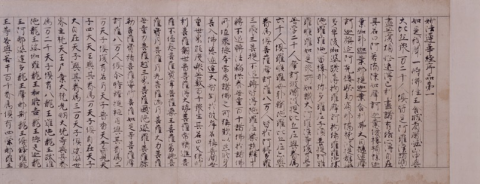Writing against Death: Buddhist Palimpsests of Medieval Japan
With the cataclysm of death, what happens to those remaining fragments of a life, which appear disposable to others but become the mourner’s heart-breaking distillations of both presence and loss? In the epistolary culture of medieval Buddhist Japan, handwritten letters – reused, recycled, and reframed – figured prominently in private mourning rituals. Upon the death of a loved one, family members gathered the dead’s letters and transcribed sacred scripture atop their surface, transforming the original missive into an embodied palimpsest. This talk analyses these recycled letters as the key to uncovering the crucial relationship between handwriting as traces of the dead and the very materiality of the letters’ paper. Like most medieval material culture, much of their histories have been erased or forgotten. But through an object biographical approach that traces the moments of transformation marking the manuscripts’ materiality, we can come closer to understanding the afterlives of these letters through the prism of medieval reuse and recycling. Doing so also recovers the palimpsests as ritual objects, as performances of mourning, and as prayers for salvation.
Halle O’Neal, a specialist in Japanese Buddhist art, is a Reader and Director of Research in the History of Art department at the University of Edinburgh and an Associate in Research at Harvard University, Reischauer Institute of Japanese Studies. Her recent book, Word Embodied: The Jeweled Pagoda Mandalas in Japanese Buddhist Art, was published by Harvard University Press in 2018 and explored the intersections of word/image and relics/reliquaries. Her current monograph project, “Writing against Death: Buddhist Palimpsests of Medieval Japan,” examines the materiality of death and mourning and the visualisation of memory and embodiment in Japanese letter sutras.

